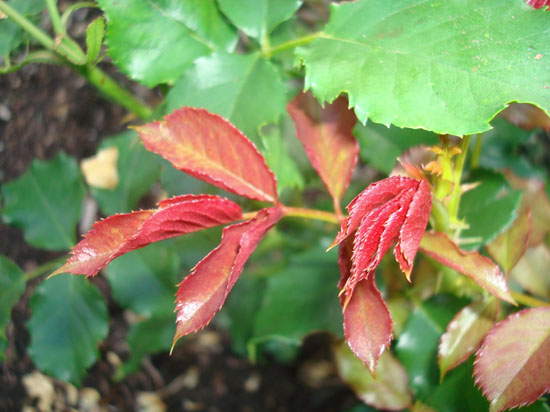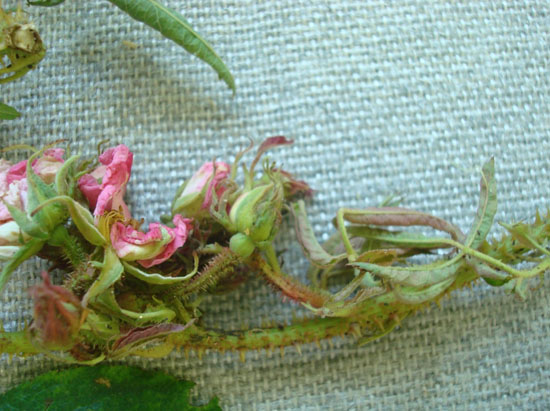Issue 12, July 25, 2011
Rose Rosette: It is Still Lurking in Roses
What is Rose Rosette Disease?
Rose Rosette disease is caused by what is thought to be a "virus-like" disease or a double-stranded RNA and is known to affect plants in the Rose family. Multiflora rose, often considered to be an invasive plant species, is very susceptible to this disease. Many species or selections of cultivated roses can vary in susceptibility to this disease; however it is assumed that most cultivated roses can be susceptible to Rose Rosette Disease.
Unfortunately, there are no tests for this disease. But, the symptoms of this disease are very distinct; therefore a suspected diagnosis oftentimes can be based on symptomology. Symptoms of rose rosette disease may include thick, often redder than normal stems with many times the normal number of thorns. Multiple stems at the ends of branches produce witches' broom growth and often small, distorted, and chlorotic leaves as seen in the image.



But, we do have to be careful, because herbicides that come into contact with rose foliage can cause some similar symptoms to Rose Rosette; therefore be sure to investigate the use of herbicides near affected roses. Some herbicides may cause the witches' brooms, distorted growth, and discoloration, but they do not cause prolific production of thorns.
How can your roses become infected by Rose Rosette Disease?
The vector of this disease is an eriophyid mite, a mite so small that you need a 10X or stronger power magnifying glass to see them. The presence of this vector can also help with diagnosis. In the lab, we use a dissecting microscope to view the new growth. As we pick apart the buds the mites can sometimes be found scurrying away from the light and heat. This disease is also transmitted by grafting.
What are the recommendations for treating this disease?
Plants with symptoms should be dug up and destroyed (including roots) when first noticed. It is strongly suggested that multiflora rose and garden roses be separated as far as possible from each other. The efficacy of mite control has been questioned in control of this disease, but if miticides are used, research suggests that the critical mite-transmission time is May and June, so concentrate your efforts in those months.
Will roses die from this disease and how quickly?
Currently, infected plants cannot be salvaged. This disease is believed to be fatal and plants can die about 22 months after infection.
Is replanting roses an option?
The soil itself is not infected, but roots and stems in the soil could be infected. The infected plants should be burned or bagged and removed from the site. This includes roots that might host the rose rosette pathogen. It should not be necessary to remove the soil. In some cases, if infected multiflora rose or ornamental rose plants with Rose Rosette are nearby, the vector (eriophyid mite) could continue to infect newly planted roses. (Stephanie Porter)
Author:
Stephanie Porter